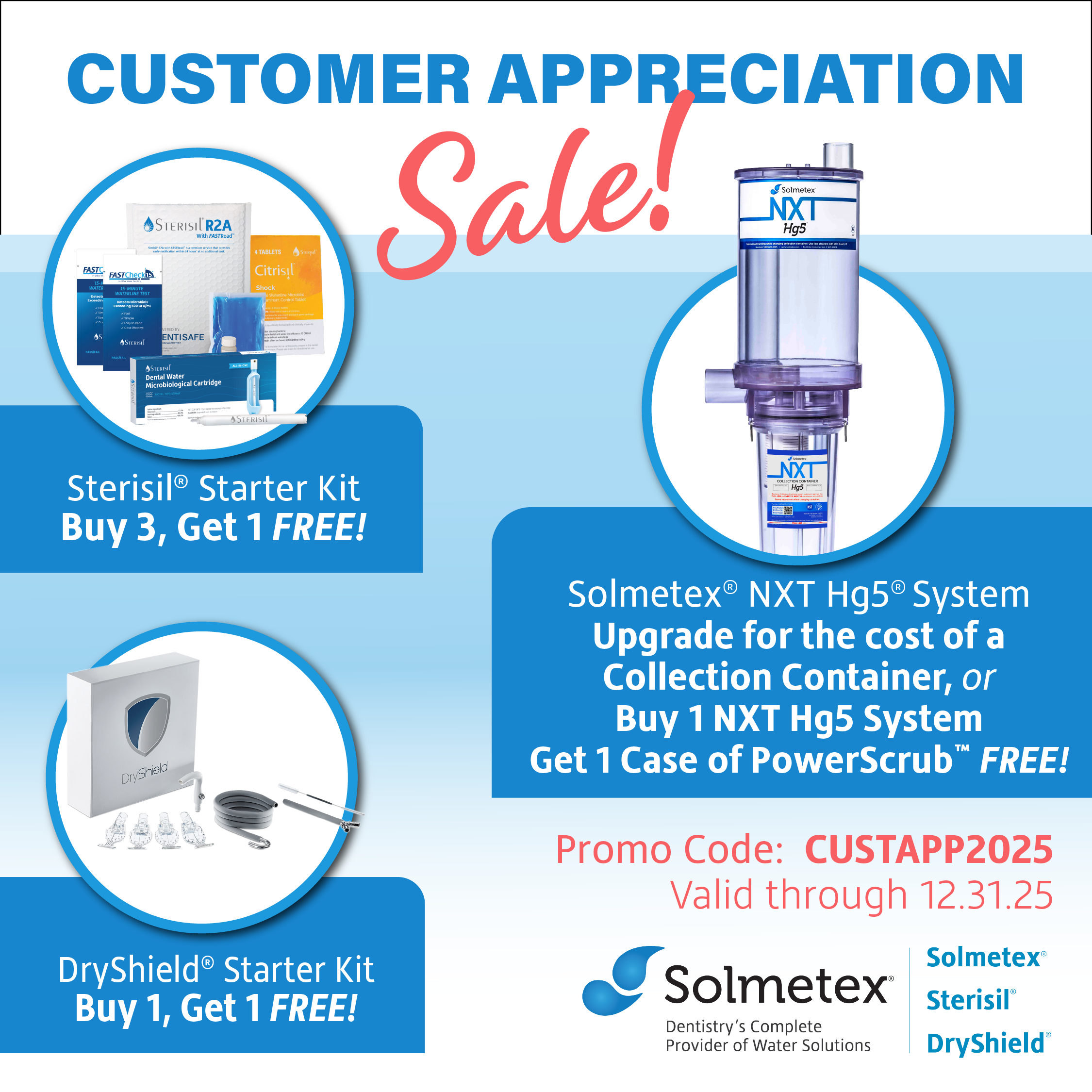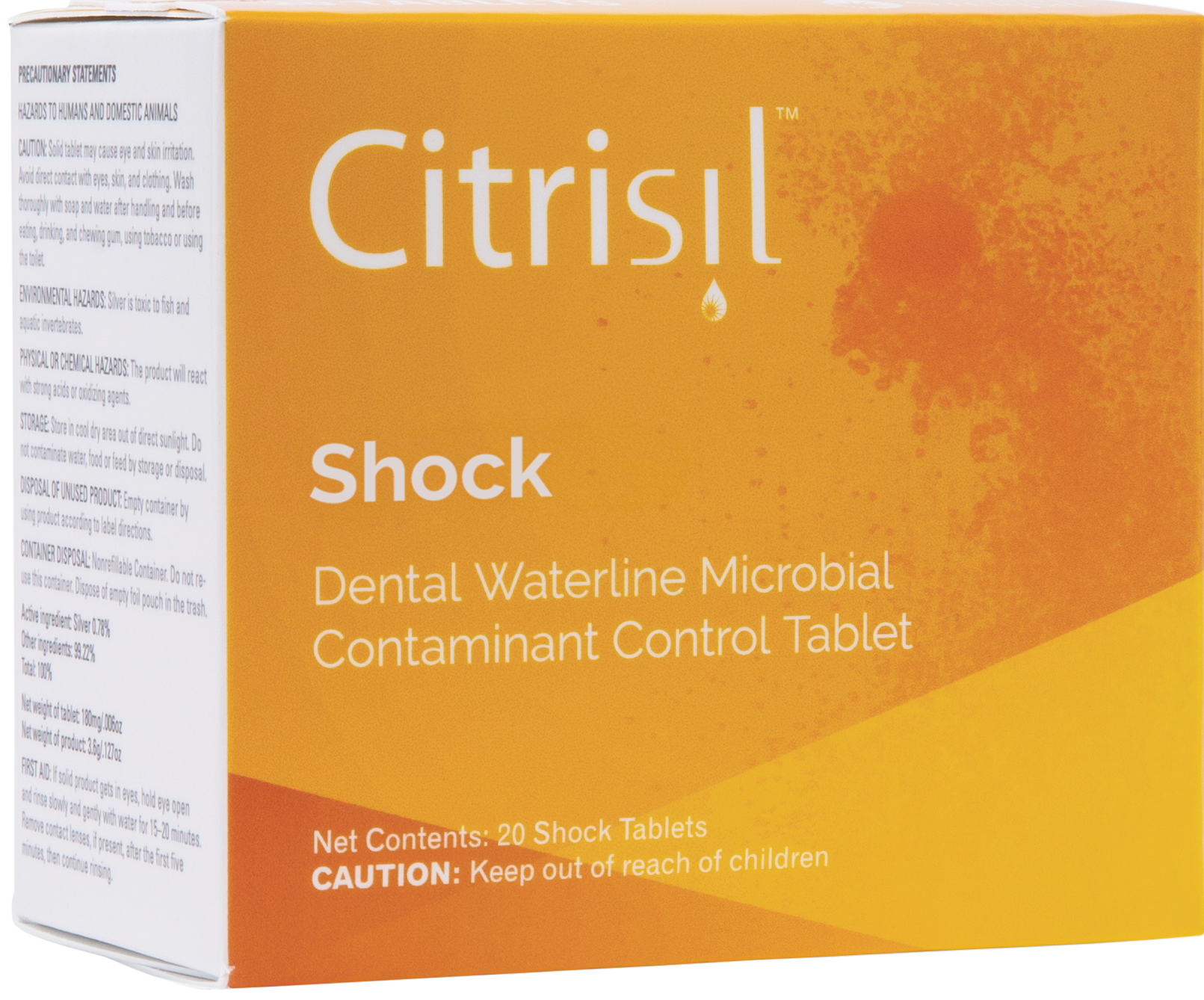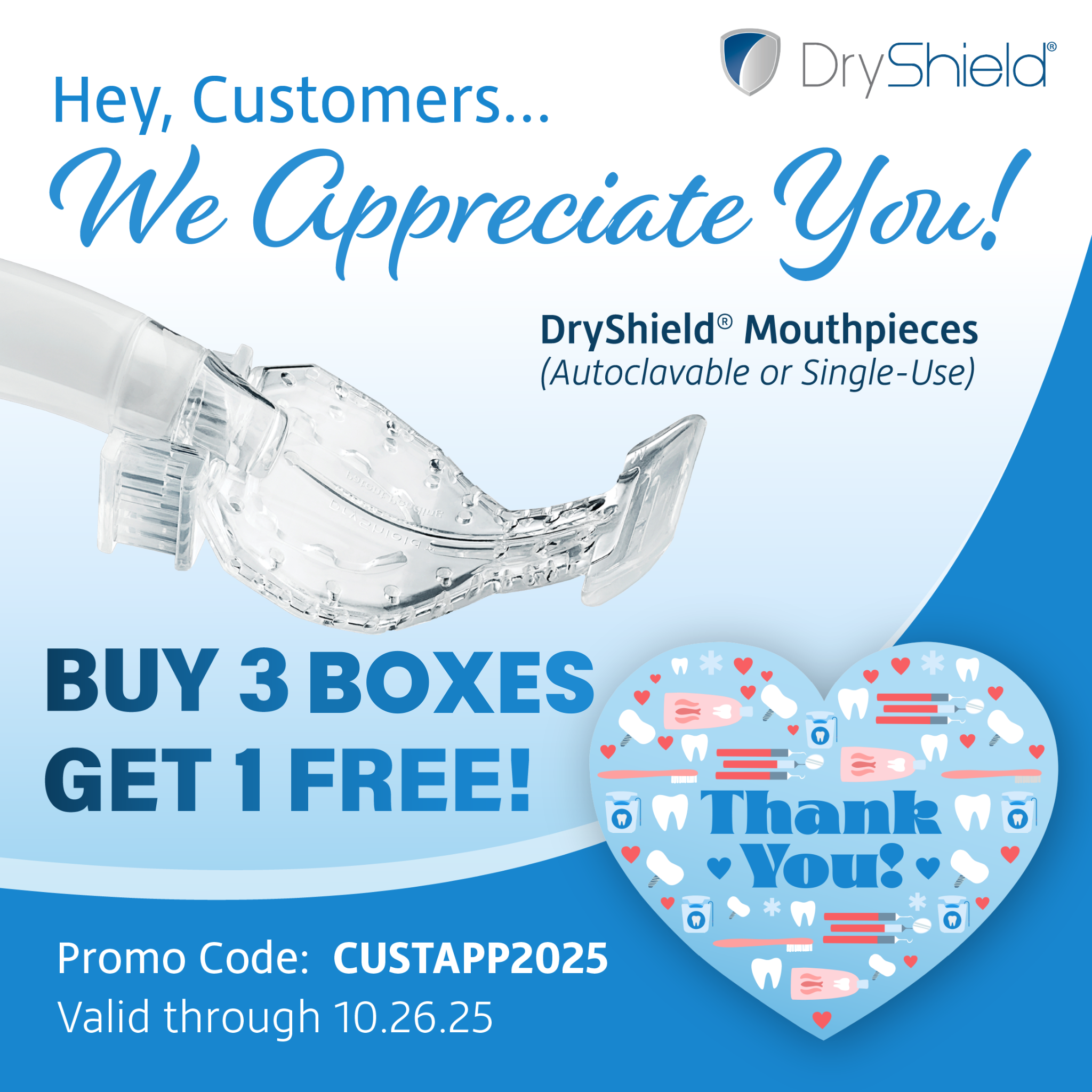Your cart is currently empty!
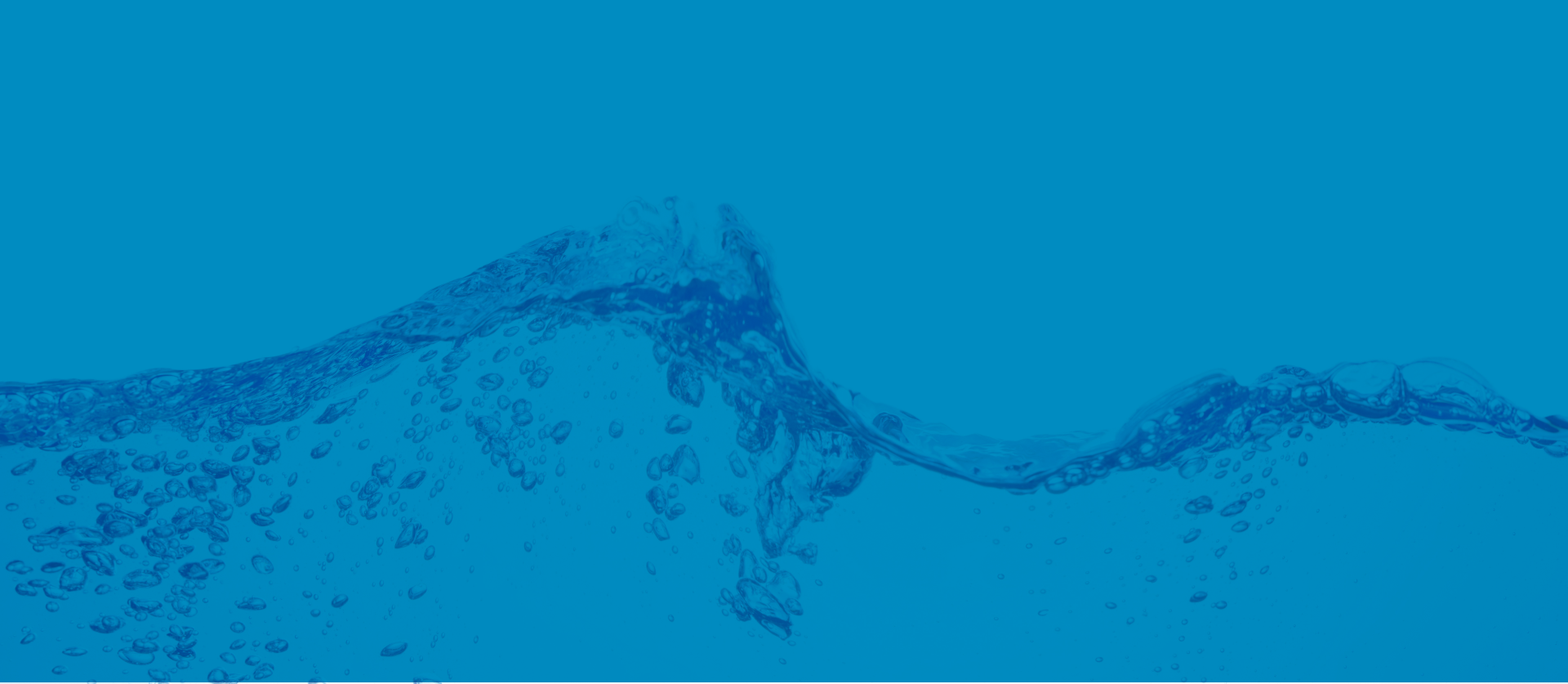
New Dental X-Ray Guidelines: What to Do with Your Old Radiation Aprons
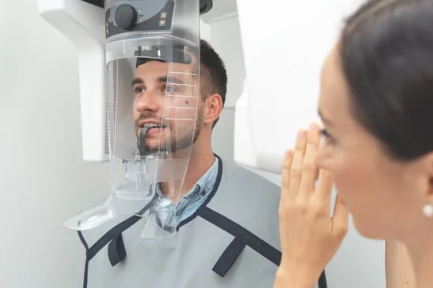
Summary: The American Dental Association’s new x-ray guidelines state that lead aprons are no longer necessary for most dental imaging, thanks to advances in digital technology. However, dental lead apron disposal must be done properly, as lead is a hazardous material that cannot simply be thrown away. Solmetex offers an easy, compliant solution through its Lead Disposal Bucket Program, helping practices safely retire outdated equipment and stay environmentally responsible.
For decades, radiation aprons have been a familiar part of the dental x-ray process. Patients expect to see that heavy, protective cover come out before any radiographic exam. But that’s changing.
According to the American Dental Association’s updated radiography safety recommendations, dental practices no longer need to use lead aprons for most patients. Backed by evidence from the National Council on Radiation Protection and Measurements (NCRP), the new guidance emphasizes that modern digital x-rays deliver extremely low doses of radiation—so low, in fact, that routine shielding may provide little benefit. But while this is a win for efficiency and patient comfort, many dental teams are left wondering:
What do we do with all our old lead aprons now?
If your practice is cleaning house and phasing out radiation aprons, now is the time to think about responsible lead disposal. Here’s what you need to know—and how Solmetex makes it easy.

Why Lead Aprons Are Being Phased Out
Historically, lead aprons and thyroid collars were used to shield patients from scatter radiation during x-rays. However, advances in digital radiography, equipment shielding, and beam restriction have made these tools largely redundant.
According to the ADA’s update, using a lead apron provides no additional protective benefit when up-to-date equipment and proper imaging techniques are in place. In fact, the aprons can sometimes interfere with imaging and lead to retakes—meaning more radiation, not less.
This change means dental offices can skip the apron for routine intraoral and panoramic imaging in most patients, with exceptions only in rare or specialized cases.
But Here’s the Catch: You Can’t Just Throw Lead in the Trash
Lead is classified as a hazardous material, and for good reason. Improper disposal of lead-lined aprons can contaminate landfills and water supplies, posing serious health and environmental risks–things we’re trying to avoid in the first place!
That means old aprons, thyroid collars, and other lead-based shielding gear must be disposed of through an EPA-compliant hazardous waste process.
Unfortunately, tossing them in a bin labeled “recycling” won’t cut it. Even aprons labeled “lead-free” may contain toxic heavy metals that require special handling. That’s where Solmetex comes in.
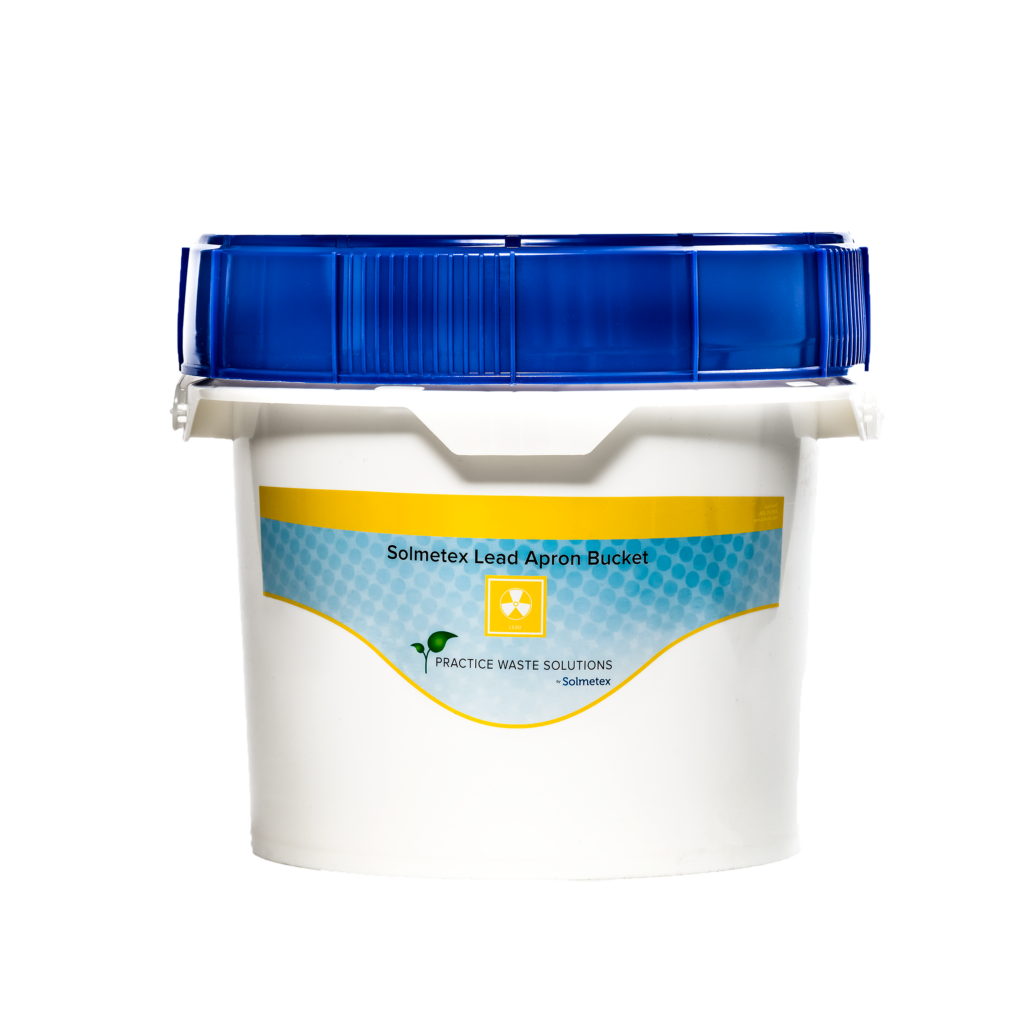
The Easy Way to Handle Dental Lead Apron Disposal
Solmetex offers a streamlined solution for dental lead apron disposal with our Lead Disposal Bucket Program.
Here’s how it works:
- Order a Solmetex Lead Bucket.
- Place your retired aprons, thyroid collars, and other lead waste inside.
- When full, simply seal and return using the included shipping label.
- We handle the compliant recycling and disposal, and you receive a certificate of proper disposal for your records.
It’s hassle-free, environmentally responsible, and ensures you’re in full compliance with federal and state hazardous waste regulations. Our lead buckets are part of a complete suite of environmental compliance tools, including amalgam separation and waterline treatment. We’re trusted by thousands of dental practices for safe, easy, and compliant management of hazardous materials.
Why Now Is the Perfect Time to Upgrade
The new guidelines mark a significant shift in how dental practices approach radiation safety. With lead aprons becoming obsolete for routine use, this is an ideal moment to declutter your practice and simplify compliance.
By responsibly disposing of your lead-lined gear now, you:
- Create space for more relevant equipment or storage.
- Avoid long-term environmental liability.
- Proactively align your practice with the most current safety standards.
And with Solmetex’s turnkey disposal program, the process couldn’t be easier.
Ready to Retire Your Lead Aprons the Right Way?
Dental lead apron disposal doesn’t have to be complicated—but it does need to be compliant and eco-conscious.
With the ADA’s new x-ray guidelines, many practices are updating their imaging protocols. Make sure your waste management protocols are up to speed too.
Solmetex Lead Buckets are a simple, responsible way to protect your community, your staff, and the environment from lead exposure.
Shop our Lead Disposal Buckets today and check one more compliance box off your list.
Modern digital x-rays deliver extremely low radiation doses, making lead aprons largely unnecessary for routine dental imaging according to updated ADA guidelines.
No. Lead is a hazardous material and must be disposed of through an EPA-compliant hazardous waste process to avoid environmental contamination.
The Solmetex Lead Disposal Bucket Program offers an easy, compliant solution for disposing of old dental lead aprons, thyroid collars, and other lead-based materials.
Not necessarily. Even “lead-free” aprons may contain other toxic heavy metals and still require proper hazardous waste handling.
When you use the Solmetex Lead Disposal Bucket, you’ll receive a certificate of proper recycling and disposal for your compliance records.
Share this post:

Related Posts



